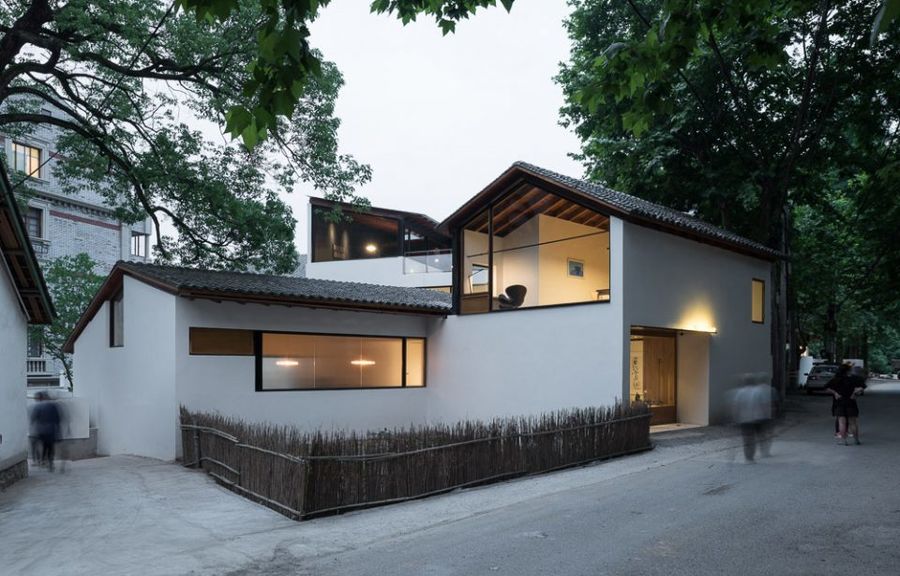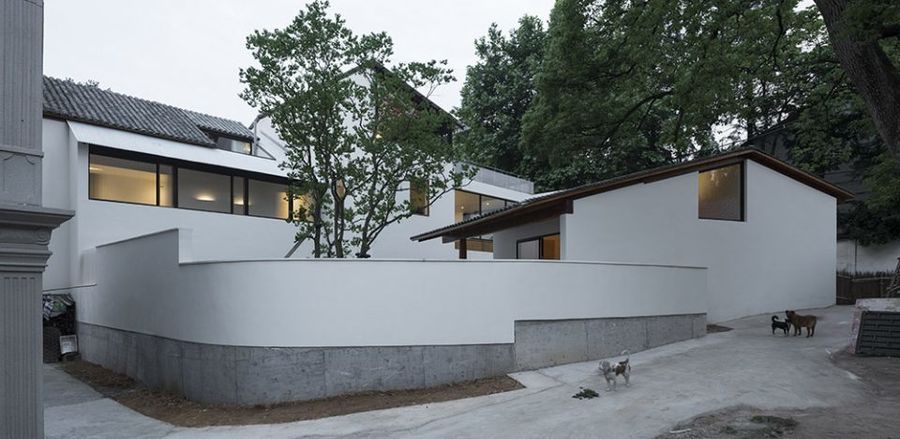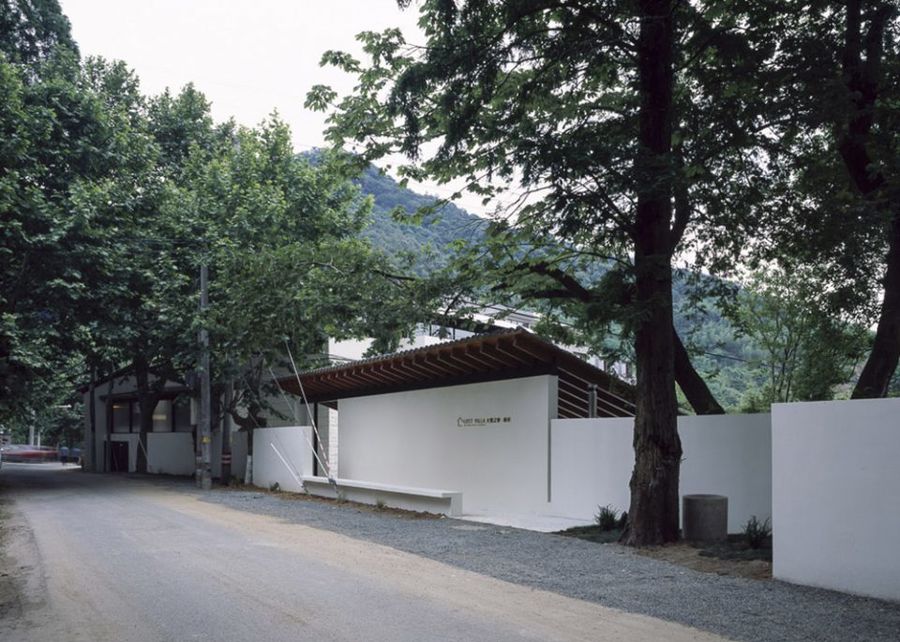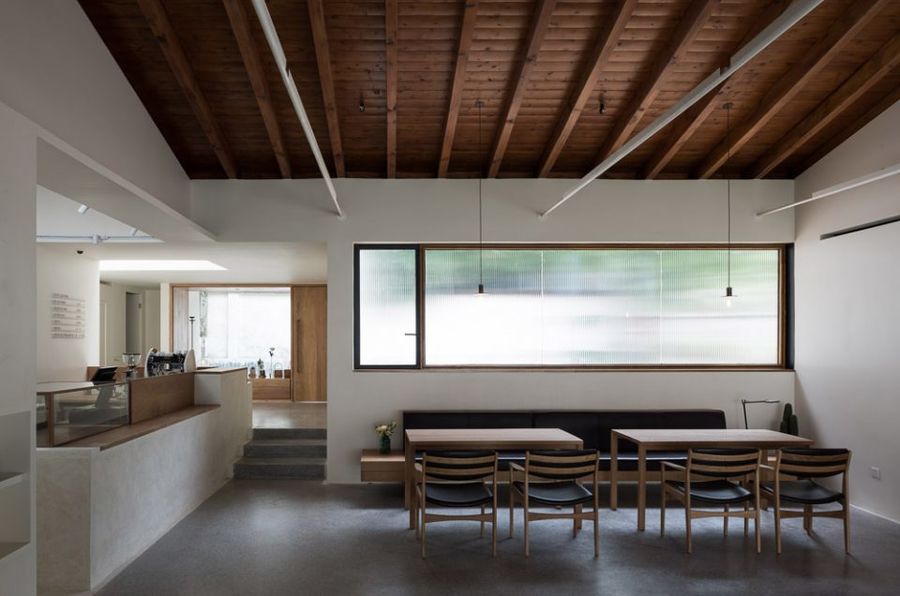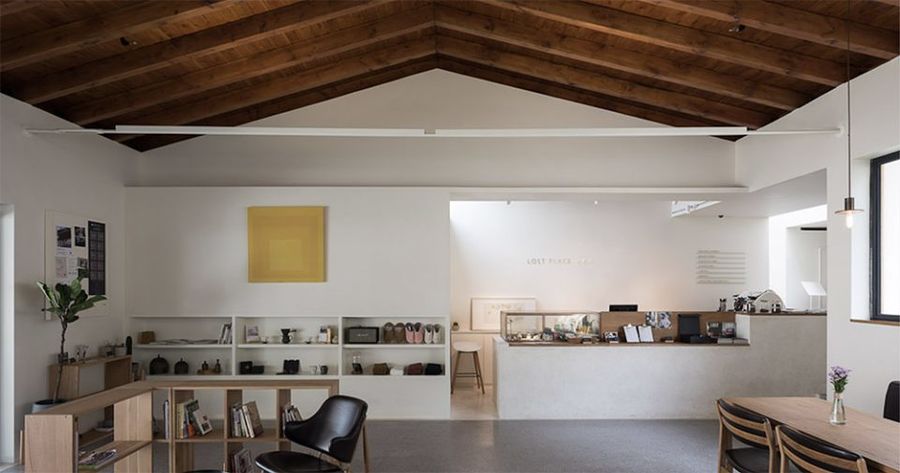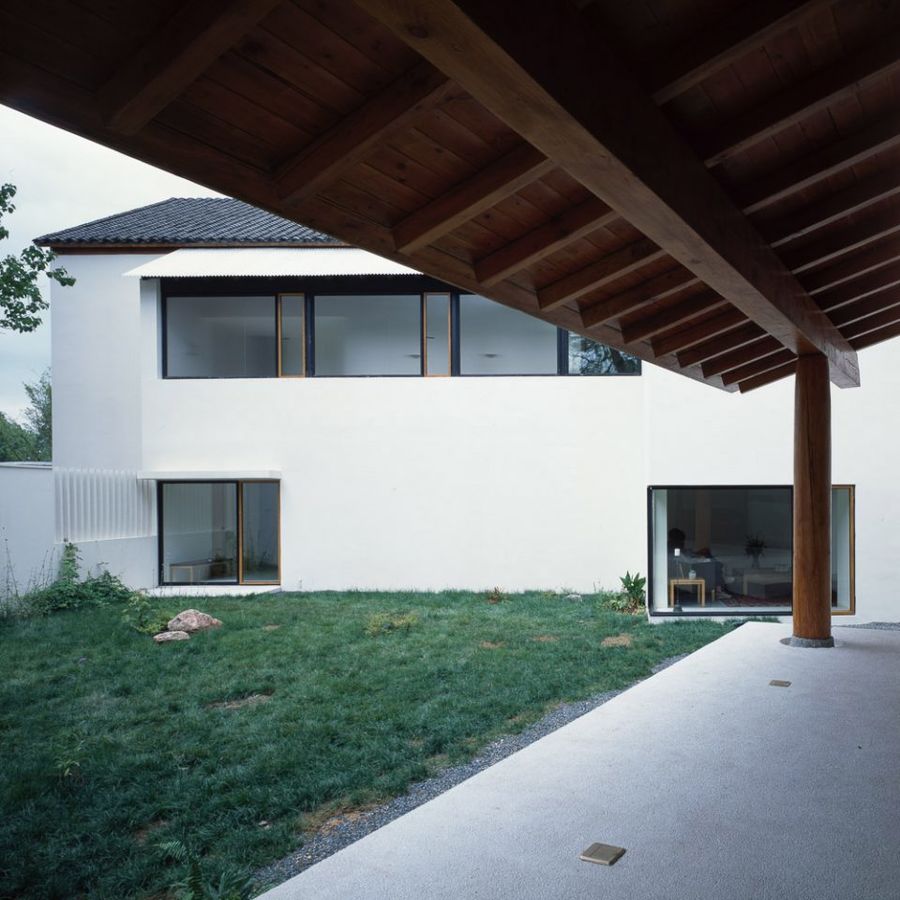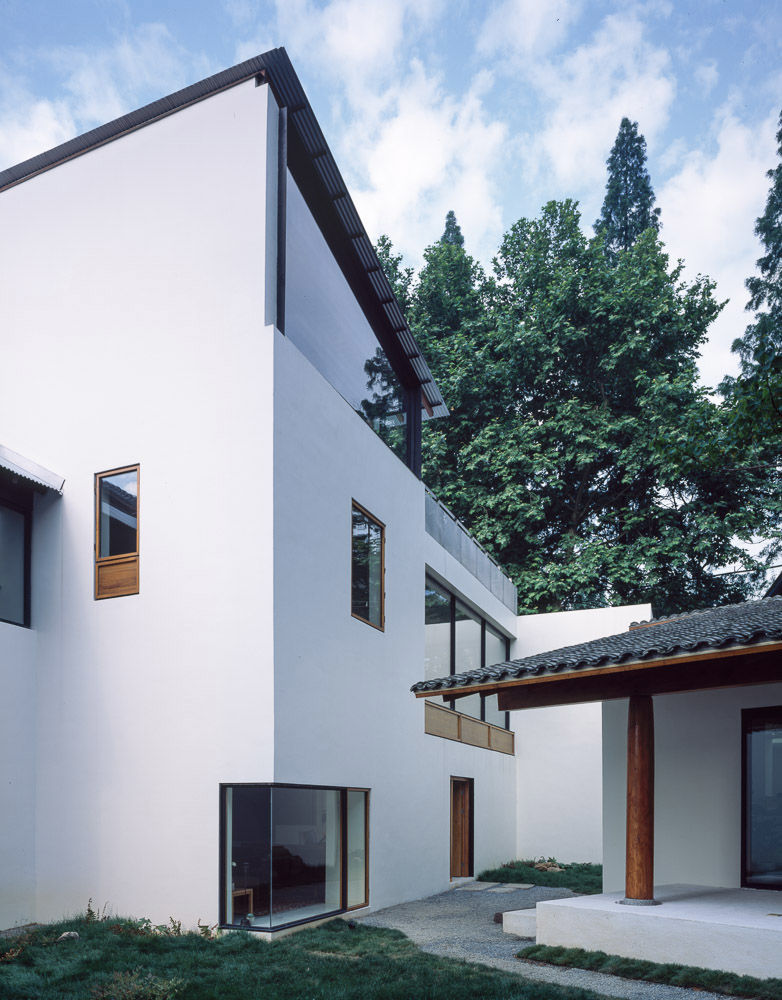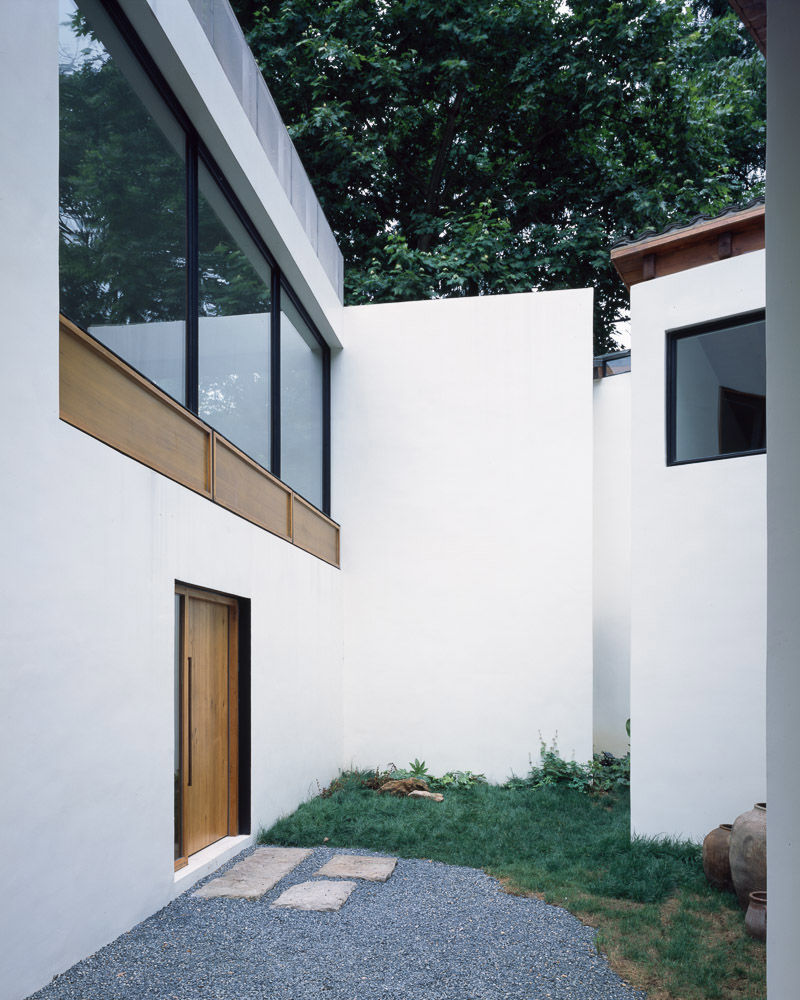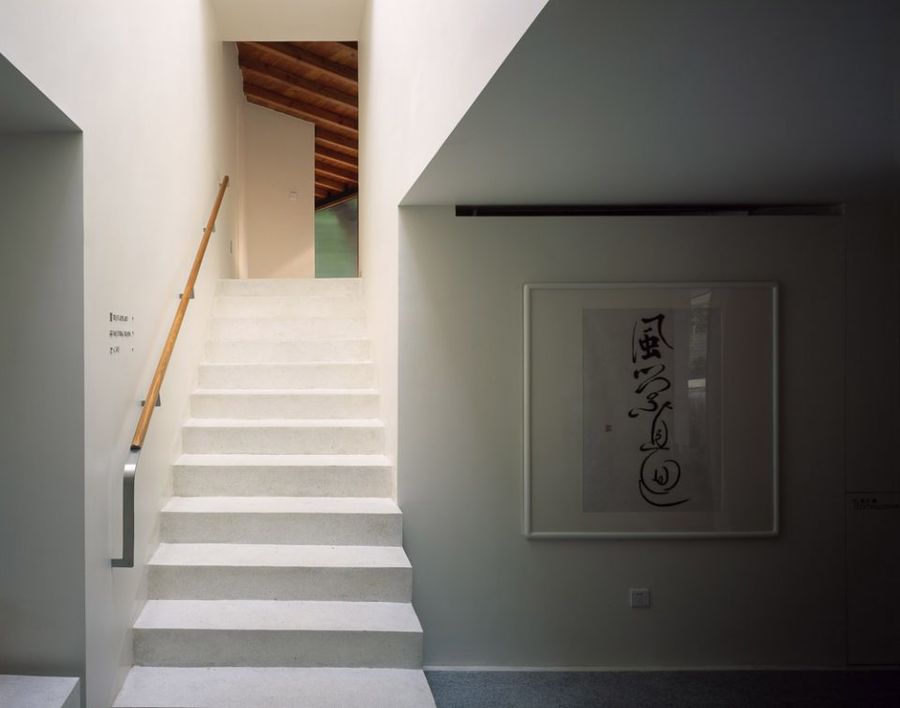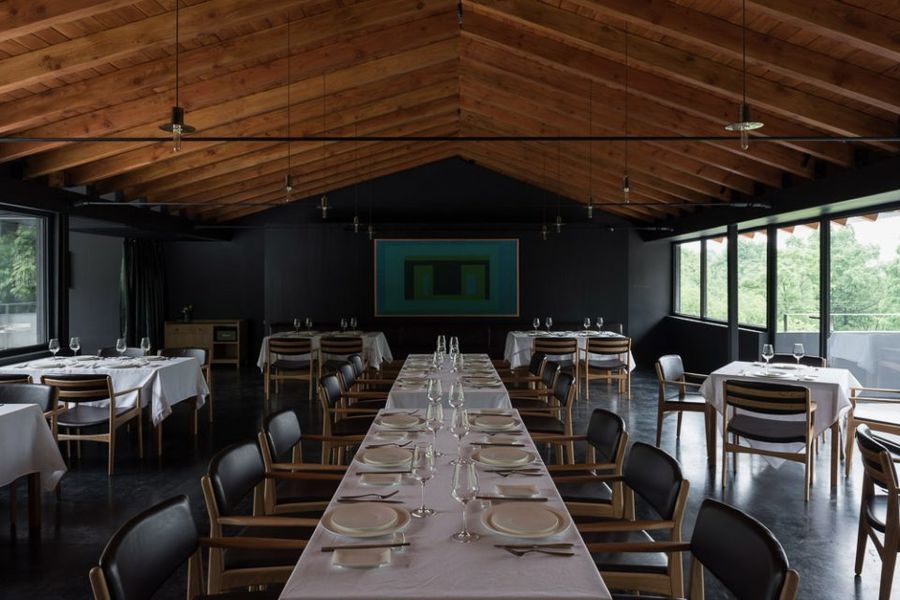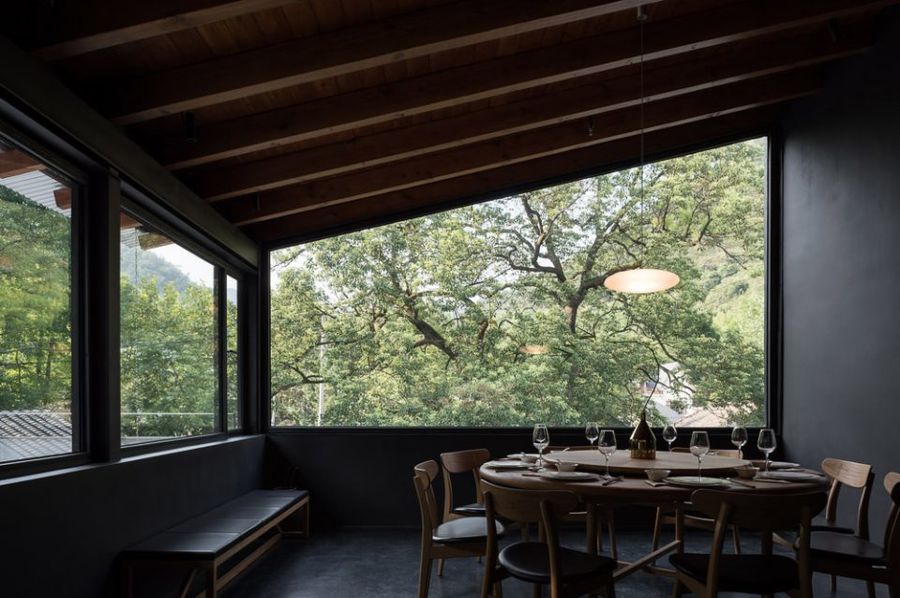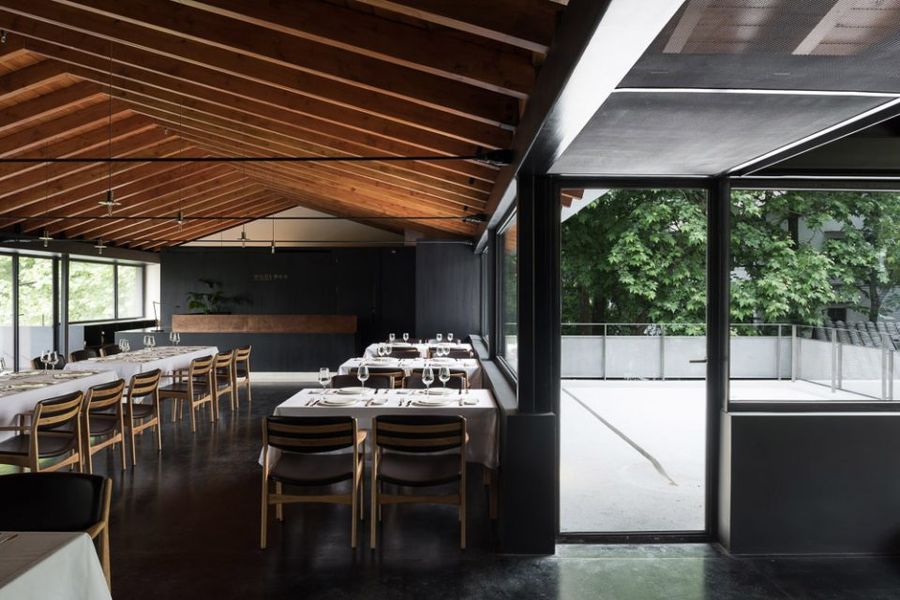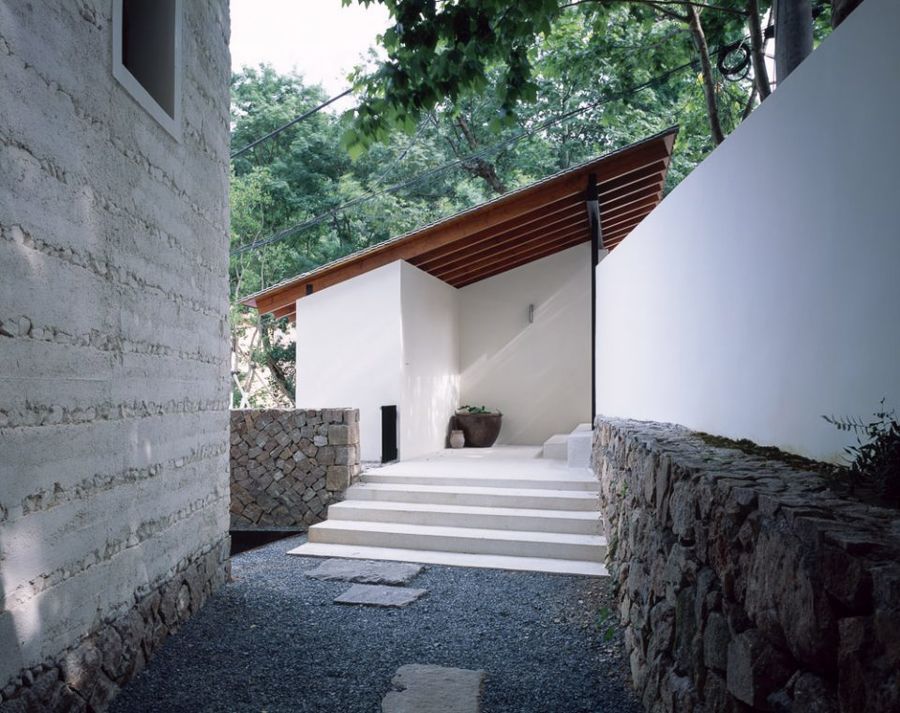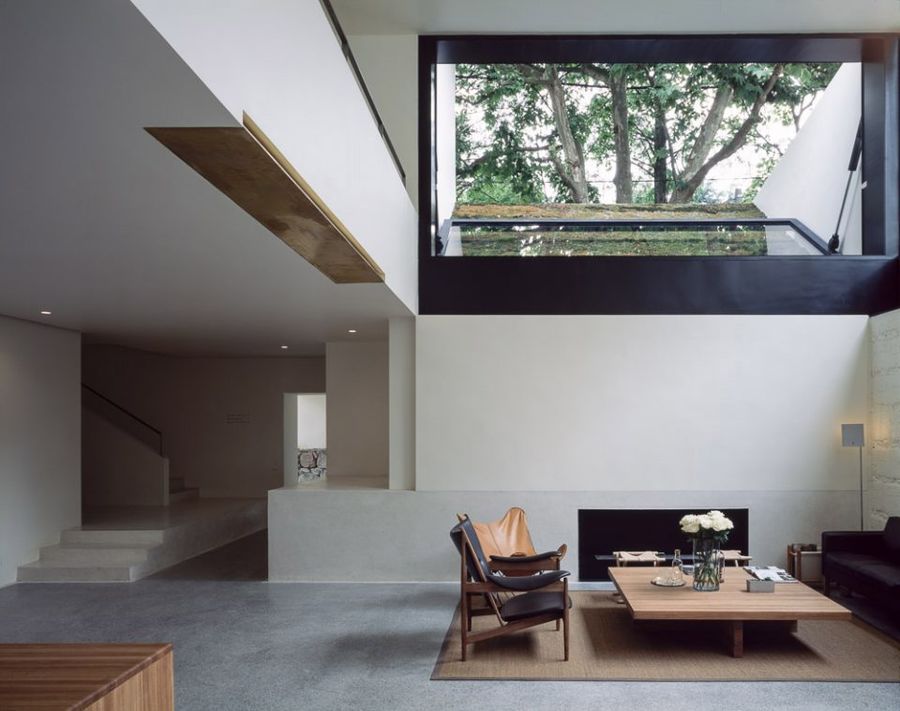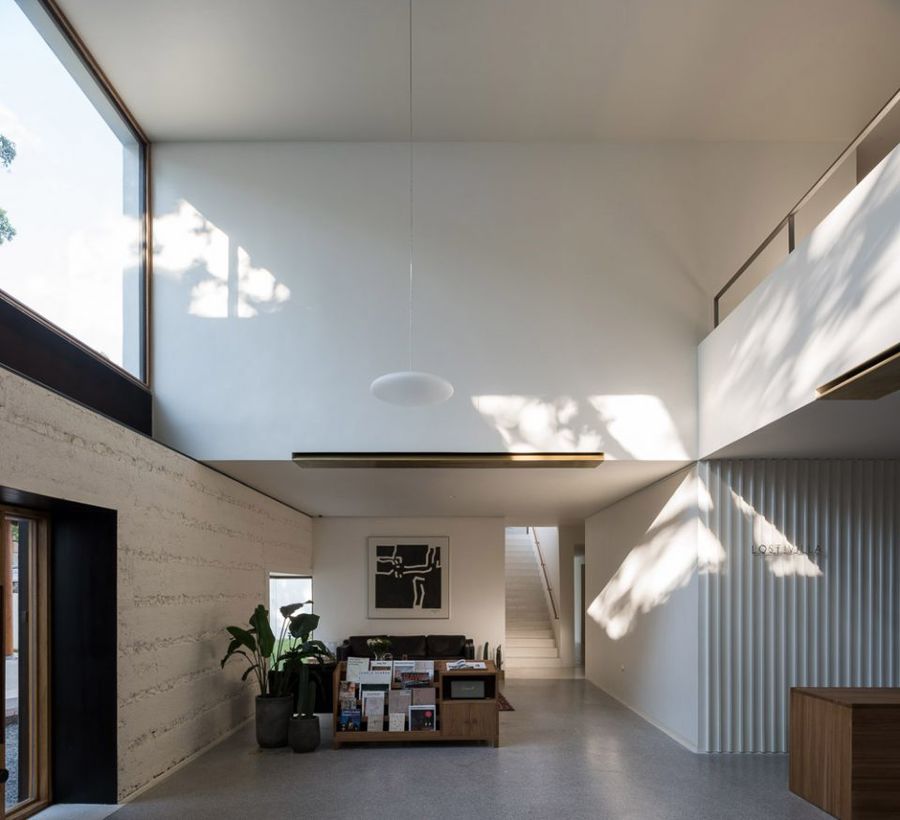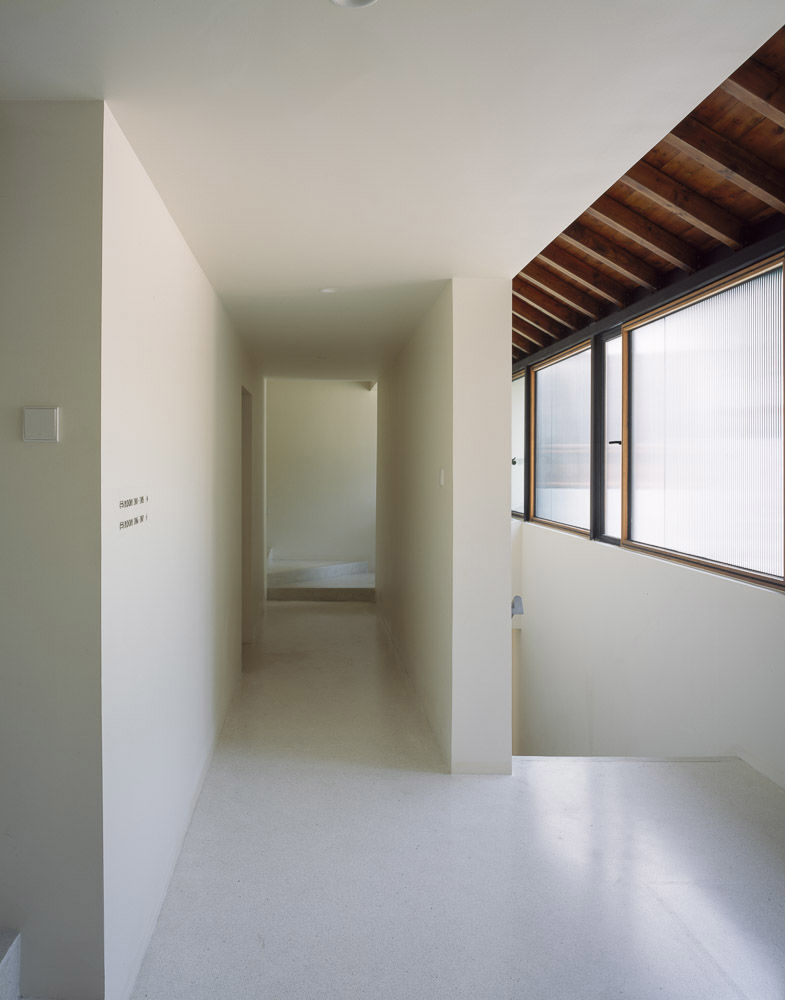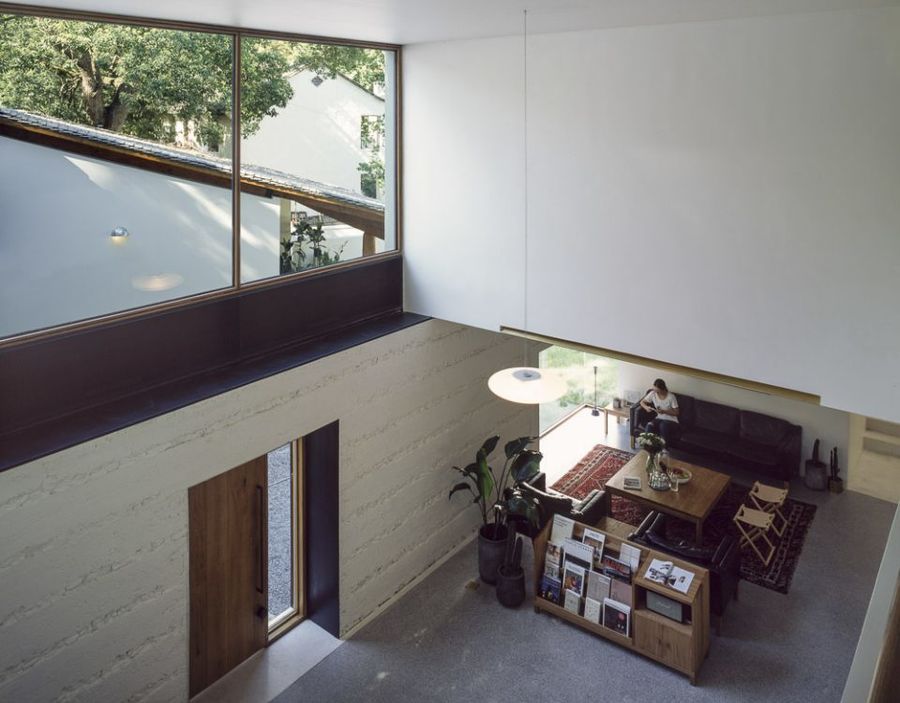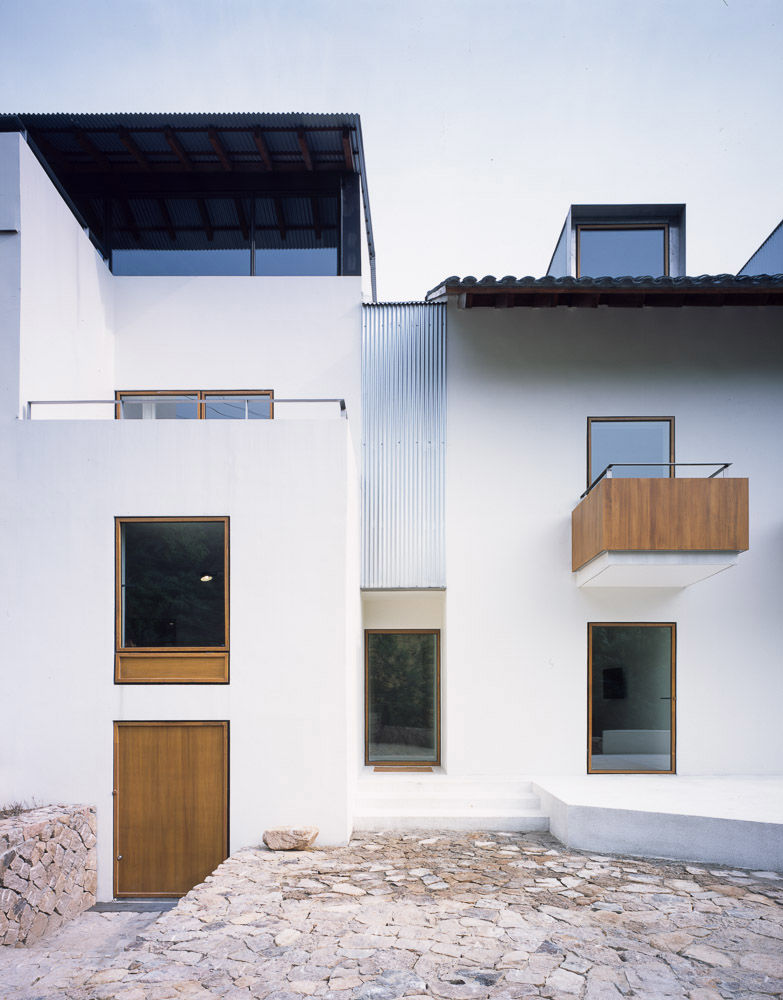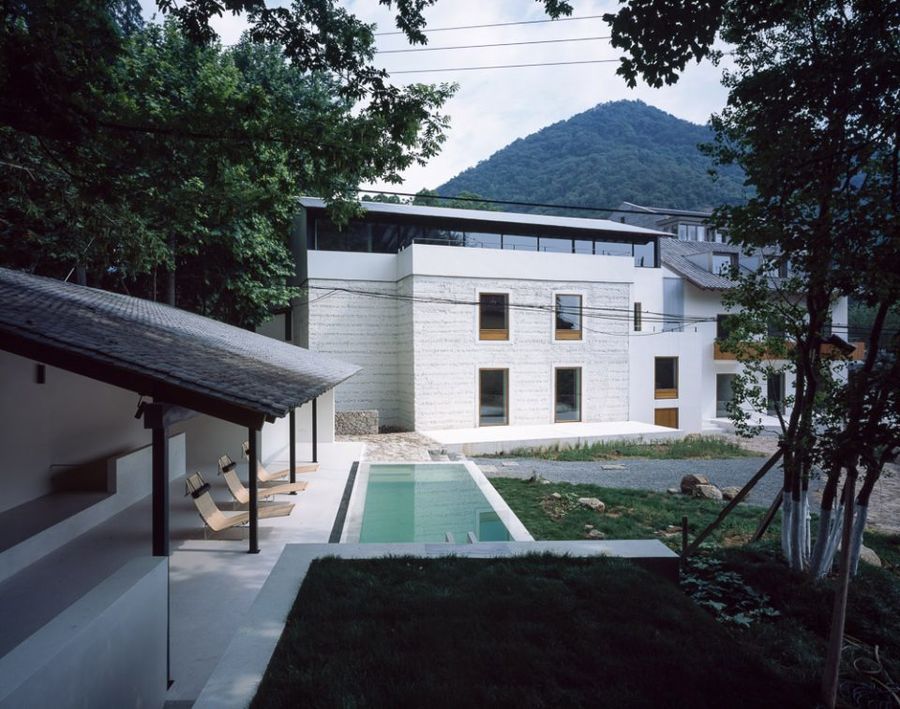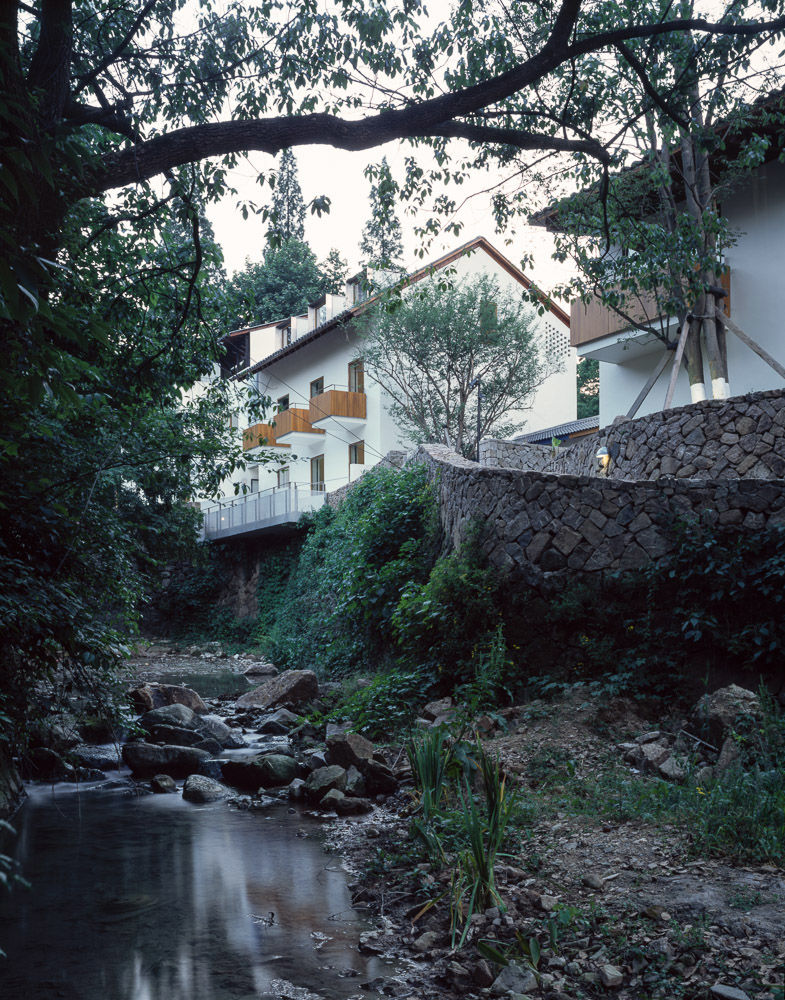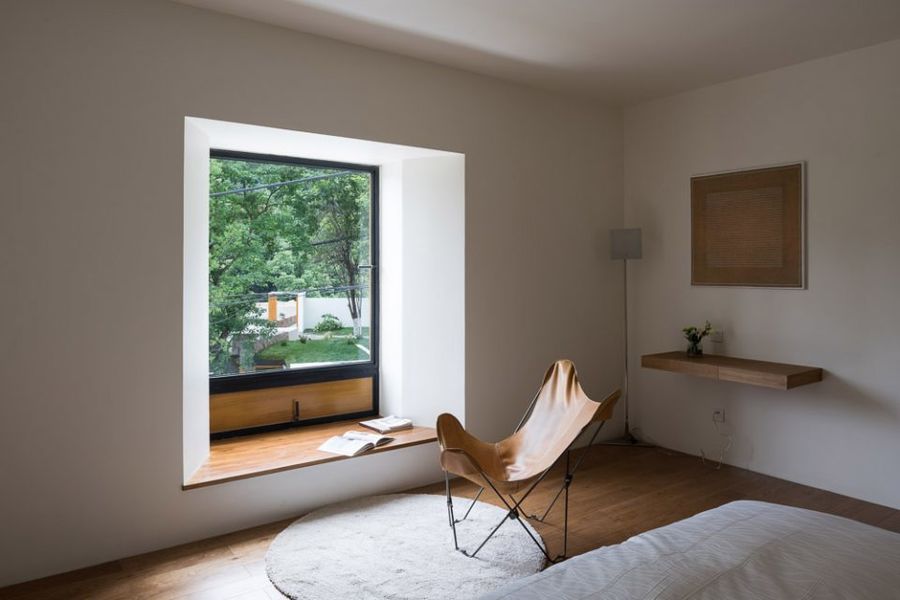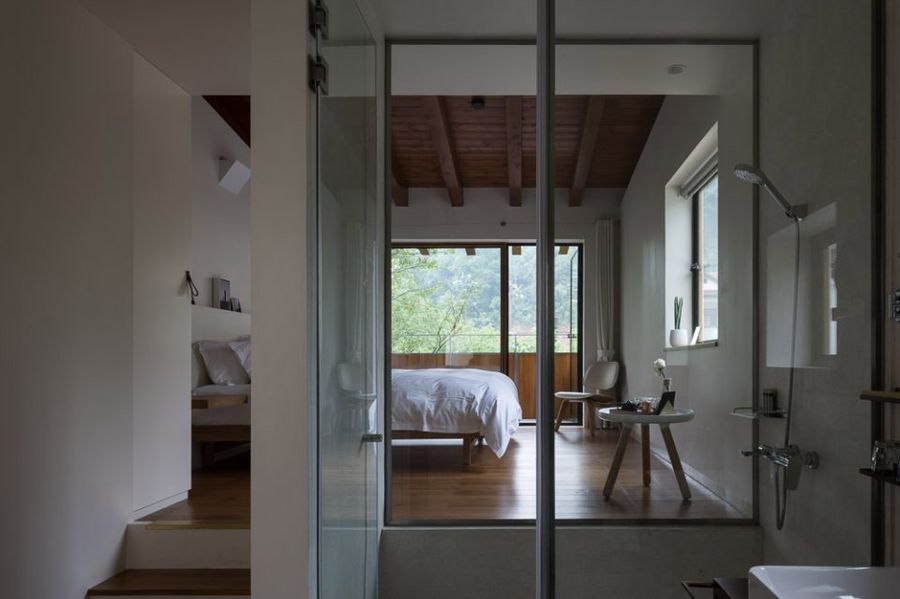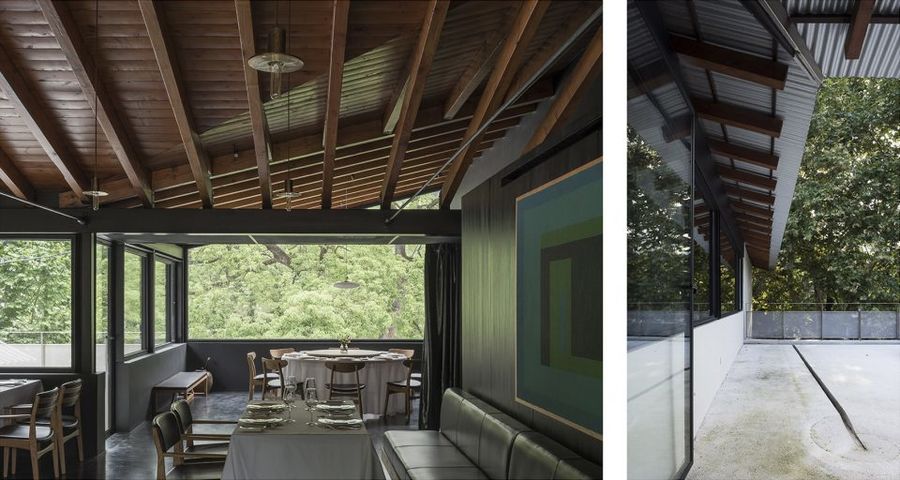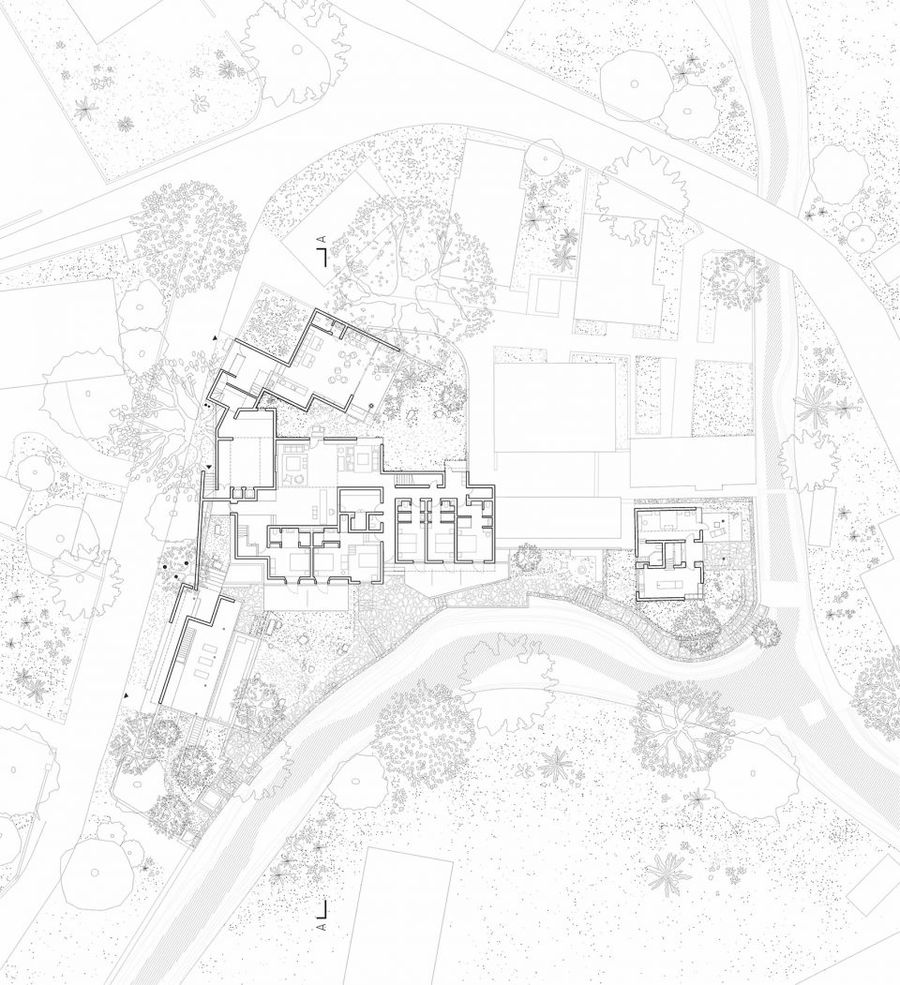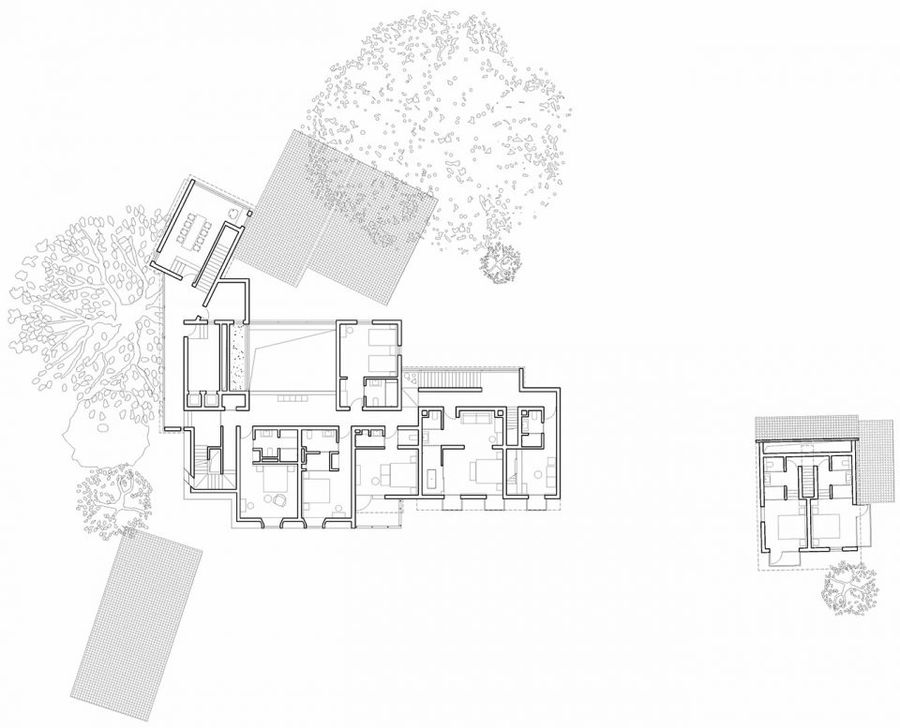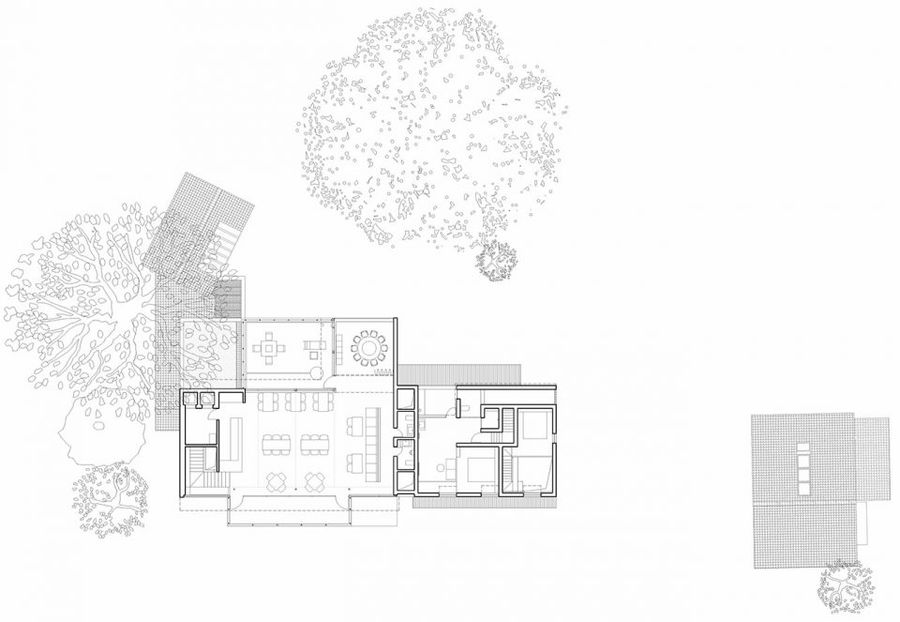项目名称: 莫干山大乐之野庾村民宿
设计单位: 直造建筑事务所设计
主持建筑师: 水雁飞 苏亦奇 马圆融
项目地点:浙江省湖州市德清县莫干山镇
设计时间:2015.03-2017.06
建造时间:2015.10-2017.06
项目业主:上海野舍酒店管理有限公司
项目建筑师:邓丹 徐翰骅
设计团队:李格格 孙晶 柴西妮 周晓燕 王珂一 陈颢 罗琳琳 陈卓然 朱丽瑾 朱颖
项目结构: 张准
项目机电: 陈哲 陆鹏飞 陈强
项目层数: 地上三层
基地面积: 1735m2
建筑面积: 1491m2
结构形式:砖混钢木结构
项目摄影:陈颢
项目基地位于浙江莫干山镇庾村国营时期蚕种厂的西侧,顺着山路可上到莫干山顶。场地从西北角转入,由北向南逐渐跌落。
北侧紧邻村舍,曲折退进;南侧沿小溪蜿蜒延展,视线开阔;
历史遗留下来的用地权属界定了犬牙交错的边界。旧有的建筑散落在场地上,有些已破旧坍塌;
对岸建设中的环山路以及废弃小学的未来状况亦难以估计; 树木填充了村落肌理的剩余空间。这是很日常的当代中国乡村的景观,是混杂的也是动态的。
Located at the southwest corner of a previously state-owned silkworm farm in Yucun, Moganshan, Zhejiang Province, the project is connected to the peak of Moganshan Mountain by a mountain trail. The site can be accessed from the northwest corner and the terrain is gradually lowered from the north to the south. There are cottages standing adjacent with jagged outline on the north, whereas the southern end opens up to a panoramic view of a meandering stream. The historical legacies of lands ownership in neighborhood shape the irregular boundary of the site. Existing old buildings scatter on the ground, some of which have even collapsed; an abandoned primary school stands on the other side of the river, whose prospects still remain unknown; trees fill up the left over voids among the rural fabrics. This is the typical landscape condition of contemporary Chinese rural area, both heterogeneous and dynamic.
▼模型东北侧鸟瞰, aerial view from northeast side of model
▼东南侧鸟瞰, aerial view from southeast side of model
因此,设计的考量是在调和当下周边多变的限制,以及对未来动态的预判下同时来展开的。
风景内化的策略不仅是建立对于不利外部的防御性,反之也让被渗透的内部成为景观中一部分。
同时我们希望为小镇提供一些可共享的公共空间,例如拥有独立出入口的咖啡厅、小型展览空间以及放置在三楼的餐厅,这也造就了公共区与民宿之间特殊的流线关系,和多样的游走体验。
The design is therefore constrained and as well motivated by both the dynamic present and the unpredictable prospects. The strategy of internalizing scenery, not only establishes a defensive gesture against the unfavorable surrounding conditions but also turns the saturated inner space into part of the landscape. At the same time, the design provides a series of public programs for the locals, such as the café (with its own separated entrance from the hotel), the small exhibition area and the restaurant on the third floor. The arrangement of programs creates a unique circulation between public space and hotel area, and various promenade experience.▼建筑体量与功能, volume and program arrangement
▼西北角街景, street view from north west corner
▼北侧外景, street view from north side
▼西侧外景, street view from west side
▼咖啡厅入口, entrance to the café
▼咖啡厅内部不同开洞与光线, different openings and light
▼咖啡厅扁平屋顶与张拉索, the flat wood roof truss and tension-cable structure
▼咖啡厅外侧凉廊与庭院, the loggia and courtyard outside café
▼咖啡厅与庭院,树,远山, café, courtyard, old trees and distanced mountain
▼咖啡厅与建筑中心体量, café and the main building
▼大厅北侧外景, exterior view from north side of hotel lobby
▼咖啡厅门厅处楼梯, stairs to the restaurant in café vestibule
▼西侧走廊, corridor on west side
▼互相可视的民宿内部楼梯与公共楼梯, hotel inner staircase and the public staircase to the restaurant can be viewed from each other
▼餐厅全景式开洞,扁平屋顶与张拉索, horizontal openings view in restaurant owing to the flat roof truss and tensioned cable
▼餐厅北向窗景, restaurant view northward
▼餐厅VIP桌大景窗, large window view towards the old Camphor from VIP table in restaurant
▼南北黑白阳台处理, the black south balcony and white north balcony view of restaurant
民宿的客房尽量都设置在中心体量的南侧以获得充足的日照和更延展的景观。
西侧的凉廊和泳池区,既作为民宿入口的引导隔离开道路,也与中心体量围合成仅供内部使用的开放性庭院。
最东侧的体量相对独立隐蔽,作为家庭化使用的独栋是最为合适的。
Most of the guestrooms are designated into the southern part of the main building to obtain sufficient sunlight and panoramic scenic views of the garden. At the west end, there are a loggia and a swimming pool, which frame the main entrance and create a perimeter that buffers the site from the main road. Together with the main building, the loggia forms an open backyard area that serves only hotel guests. As for the building on the east end, it is an independent and secluded villa that can be rented out to an entire family.
▼门厅入口处回望, view looking back from the entrance to the hotel lobby
▼大厅与北侧古树远山的对景, framed view northwards the old Camphor tree and the distanced mountain from the hotel lobby
▼大厅西侧大窗与梧桐树, view westwards the Platnaus tree
▼大厅东侧内景,洒落的阳光深入到室内, lobby view eastwards ,with the sunlight in the afternoon
▼北侧走廊, corridor on the north side
▼二层走廊处俯望大厅, lobby view north-eastwards from corridor on 2nd floor
▼中心体量南侧外景, south view of main building
▼中心体量南侧外景, south view of main building
▼西南凉廊与中心体量南侧外景, the loggia on the southwest side and the main building
▼凉廊与中心体量, the loggia and the main building
▼凉廊下空间, view under the roof of loggia
▼凉廊屋顶,躺椅与泳池, roof, lounge chair and the pool
▼中心体量南侧与通往东侧独栋体量的小径, south view of main building, and a path that leads eastward to the villa
▼东南侧沿小溪外景, view of river landscape and the buildings from the southeast
▼不同客房内景, interior view of guestroom
▼不同客房内景, interior view of guestroom
▼不同客房内景, interior view of guestroom
▼不同客房内景, interior view of guestroom
▼15间客房平面与窗景, 15 different individual guestrooms and window views
场地上的百年香樟和梧桐树,和远处的山景成为多角度反复借用的视觉对景。
窗景的思考延伸到每个房间,取得了不同的客房平面和窗户视线的关系。
设计抓住了布局与内部的拓扑关系,而在具体性放了一手,让策略性的思维超越了概念,最终呈现一种自然的姿态。
Taking advantage of the site’s hundred-years-old Camphor and the Platanus trees and even the distanced mountains, the design frames scenes to create a sequence of dynamic views from the building. The framing scenery interacts differently with the layout of each individual room, and diversifies the relationships between each room’s plan and the window. While the design emphasizes the topological play of the programmatical layout and the interior scenery, it stops at the level of specificity, allowing strategic thinking surpass the concept. Eventually, the design presents a more natural gesture.
▼古树的不同框景, the hundred-years-old Camphor is scenically framed to create a sequence of dynamic views from the building
结构上我们采用了砖混与钢木屋架的混合体系,在造价与景观视线上取得一个最相对较优的平衡。
最终的效果追求了一种视觉的精度,然而这个精度并不是为了突显这些细节。相反地,是为了让细节退后,让它成为背景的一部分,与景观的日常性形成关照。
一方面,设计在细节层面主动预判了乡村建造中涉及材质交接、设备整合与供应链选择的问题,回避一些惯常做法带来的干扰。
通过全程的设计参与,让我们有机会调动不同的供应链来展开一系列的协作。例如,钢木门窗体系、室内胶合木门、大型可开启电动窗的共同研发以及,多种灯具和家具的定制等等。
另一方面,建造过程中面临着不可预期的误差或错误以及边界权属临时变动的突发事件,这些被动的局面也推动细节产生一系列即兴的化解。
The structural system of the design is a hybrid of mixed masonry structure and wood-and-steel-trusses, which is able to strike a balance between budget and aesthetic. The design aims to achieve a type of optical precision, which is not about the precision of construction details, but, on the contrary, about creating a dialogue between the details and their background scenery. On the one hand, the detail design process aims to respond to such typical problems that one encounters when building in rural China. This includes poor construction quality, the lack of infrastructure and limited product supply. It is through an closely collaborative process that operated throughout the entire design and built development between us (the designers), prefabrication suppliers and local craftsmen that these respective issues are resolved. A series of steel/wood window and door systems, interior plywood doors, extra large automatic window as well as a series of customized light fixtures and furniture are all the product of this collaboration effort. On the other hand, the detail design is otherwise the reaction to the inevitable construction errors and the sudden changes of local constraints. As a result, these accidental issues induce a series of improvisational designs on site.
▼餐厅屋顶阴脊内部双层屋架,外部水沟与地面集水细节处理, double- layer wood truss under the internal ridge of roof, the gutter and the spiral rain collector detail on ground
▼大厅大型可开启电动窗, the extra large automatic window in the lobby
▼化解施工误差产生的柱础细节, column base improvisational detail due to the construction error
▼一层平面图, site plan
▼二层平面图, second floor plan
▼三层平面图, third floor plan
▼剖面图A-A, section A-A
▼北立面, north facade
▼南立面, south facade
▼东立面, east facade
▼西立面, west facade
更多案例推荐:
巴厘岛Santai度假村>>http://www.banjiajia.com/posts/30058





